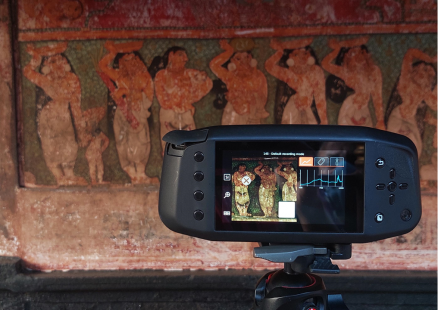Event: Weds Talks:Understanding Pigment Composition in Kerala Temple Murals using non-invasive Imaging Techniques
Event Details
Speaker: 
Moupi Mukhopadhyay
Ph.D. Student
UCLA Conservation of Material Culture IDP
Abstract: The wall paintings in the Indian state of Kerala belonging to the Kerala mural tradition (7th - 17th century CE) provide important cross-cultural links that contextualize local historical religious practices, trade, and social interactions. The complex color scheme of the paintings is traditionally attributed to the skillful use of only five colors (panchavarna) – black, red, yellow, green and white. However, the available literature on the technical study of the murals does not consistently assign the same material (coloring agent or pigment) to the composition of a single color. For example, while black is generally accepted as lamp black across different publications, the green has been ascribed to green earth, powdered leaves, or combinations of yellow ochre, gamboge, indigo, and even lapis lazuli. Understanding the materials used in specific temple murals, and their possible sources, can help better understand the nature and movements of the agents involved in the creation of these paintings. Advances in material characterization methods have significantly increased the scope of identifying the composition of the colors in murals non-invasively, ideal for the preliminary research required to build a case for a more intensive technical study. Non-invasive fieldwork was conducted on selected temples in Kerala, using a digital single-lens reflex camera (DSLR) for photography as well as Infrared (IR) imaging, and a SPECIM IQ hyperspectral camera for hyperspectral imaging (HSI). Permissions to access the temples allowed for the use of only sunlight as the illumination source, adding to the complexity of the interpretation of the data obtained. The use of Infrared False Color Imaging (IRFC) in conjunction with the analysis of HSI data reveals photophysical characteristics of the pigments which are useful for their identification, and for determining optimal characterization methods for further scientific investigation.
Bio: Moupi Mukhopadhyay is a PhD Candidate in the Conservation of Material Culture Program IDP at UCLA. She is interested in investigating the photophysical and chemical properties of pigments in cultural heritage materials using scientific techniques, to better inform their conservation. Through her research, she aims to develop a better understanding of the materials and technology of the creation of temple wall paintings in Kerala, India.


